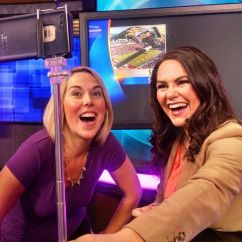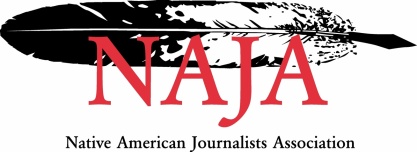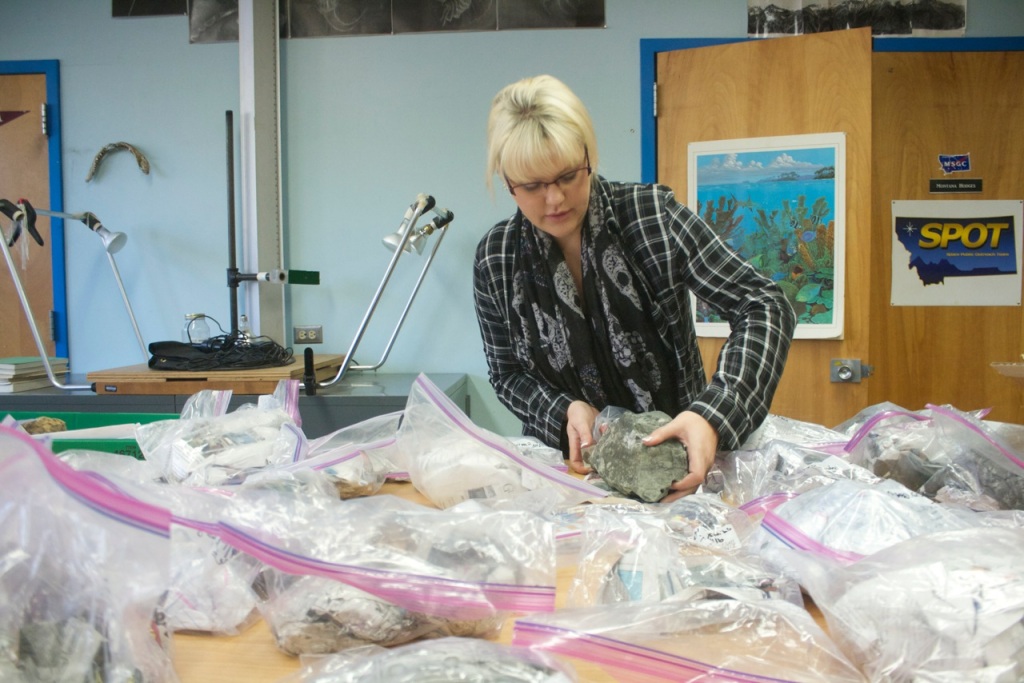When classes end each afternoon for Ariana Lake, age 21, her day as a budding broadcast journalist is only just beginning. Since the beginning of the semester, Ariana has been balancing a full course load at school with a 40 hour a week job as news anchor and producer at the television station KAJ, Channel 18. Leaving campus early-afternoon, Lake races to the studio each day to get her 5 o’clock broadcast ready. She broadcasts at 5:30 p.m. and again at 10 p.m. Mondays through Fridays.

KAJ serves the Flathead Valley area, and the stories Lake produces are reported by two correspondents, both her senior in age. They pitch her the day’s stories in the morning, which Lake helps review via either email, text or phone call while she goes about her school day. Although her market is the Flathead, her broadcast is produced at the KPAX studio in Missoula. KPAX and KAJ are sister stations and CBS Affiliates.
Journalism Professor Ray Ekness said it’s rare to have a student anchoring their own show Monday through Friday this early in their career. Despite her youth, Ekness said that on her show “she comes across as very mature, very knowledgeable about everything that’s going on.”
Lake was hired as a part time reporter for KPAX last year. When she saw the anchor and producer job open up in August, she wasn’t going to bother applying, certain she didn’t have enough experience. Then, after receiving some encouragement from a co-worker and her parents, she decided to go for it. She was hired within a few weeks.
For Lake, working at KAJ is a great chance to develop her broadcast skills in a supportive environment. “I’m not doing it completely on my own but it’s my show,” Lake said, “responsibility falls completely on me.”
She says that getting in the 5 o’clock broadcast, which has to be taped by 4 p.m., is a challenge. Some days she reaches the studio at 1:45 p.m., leaving her less than three hours to meet her deadline. Still, it’s a challenge Lake says she welcomes: “If you’re passionate about what you’re doing it’s not that hard,” she said.
After her second broadcast wraps around 10 p.m., Lake finally heads home, where she usually does around two hours of homework.
To see what Ariana Lake’s been producing, you can follow her on twitter: @ariana_lake or check out her broadcasts online at KAJ’s website.
By Andrew Graham


